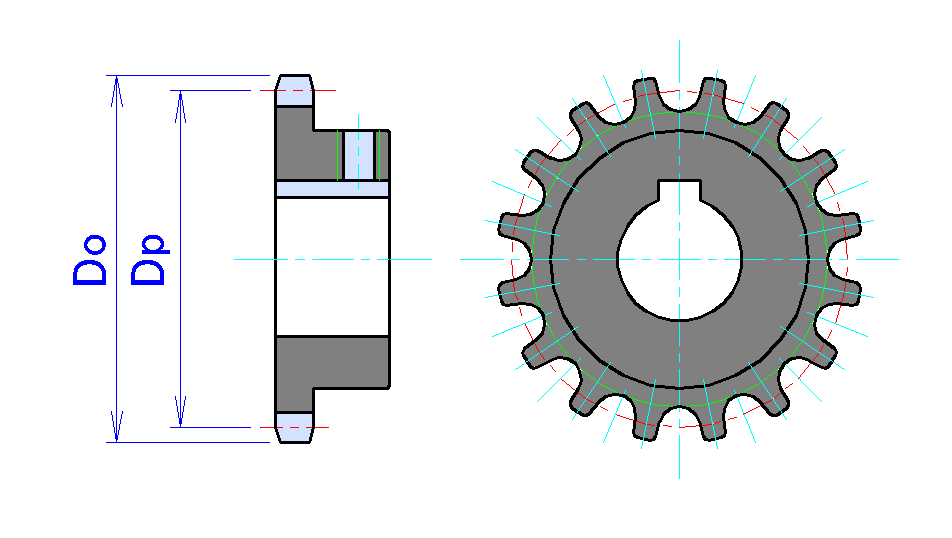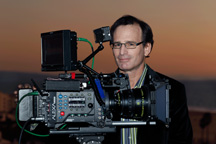|
Synchronizer (film Editing)
A film synchronizer is a device used in the editing phase of filmmaking. Film synchronizers generally have 1 to 8 "gang(s)", or slots through which film can be threaded. Each gang consists of a group of large diameter sprockets on a common shaft. A rotating knob on the front, which moves the threaded film through the gangs, operates the synchronizer's movement. At the same time, there is a mechanical numerical counter which records the amount of film that has passed through the gangs. The unit may have a counter that counts the number of frames, or the length of the footage. The entire purpose of the film synchronizer is to ensure that the film is in "sync" with other reels of film when it is hand-cranked through the gangs. The film editor may have a soundtrack A soundtrack is recorded music accompanying and synchronised to the images of a motion picture, drama, book, television program, radio program, or video game; a commercially released soundtrack album of music as f ... [...More Info...] [...Related Items...] OR: [Wikipedia] [Google] [Baidu] |
Film Editing
Film editing is both a creative and a technical part of the post-production process of filmmaking. The term is derived from the traditional process of working with film which increasingly involves the use of digital technology. The film editor works with raw footage, selecting shots and combining them into sequences which create a finished motion picture. Film editing is described as an art or skill, the only art that is unique to cinema, separating filmmaking from other art forms that preceded it, although there are close parallels to the editing process in other art forms such as poetry and novel writing. Film editing is often referred to as the "invisible art" because when it is well-practiced, the viewer can become so engaged that they are not aware of the editor's work. On its most fundamental level, film editing is the art, technique and practice of assembling shots into a coherent sequence. The job of an editor is not simply to mechanically put pieces of a film togeth ... [...More Info...] [...Related Items...] OR: [Wikipedia] [Google] [Baidu] |
Filmmaking
Filmmaking (film production) is the process by which a motion picture is produced. Filmmaking involves a number of complex and discrete stages, starting with an initial story, idea, or commission. It then continues through screenwriting, casting, pre-production, shooting, sound recording, post-production, and screening the finished product before an audience that may result in a film release and an exhibition. Filmmaking occurs in a variety of economic, social, and political contexts around the world. It uses a variety of technologies and cinematic techniques. Although filmmaking originally involved the use of film, most film productions are now digital. Today, filmmaking refers to the process of crafting an audio-visual story commercially for distribution or broadcast. Production stages Film production consists of five major stages: * Development: Ideas for the film are created, rights to existing intellectual properties are purchased, etc., and the screenplay is writte ... [...More Info...] [...Related Items...] OR: [Wikipedia] [Google] [Baidu] |
Sprocket
A sprocket, sprocket-wheel or chainwheel is a profiled wheel with teeth that mesh with a chain, track or other perforated or indented material. The name 'sprocket' applies generally to any wheel upon which radial projections engage a chain passing over it. It is distinguished from a gear in that sprockets are never meshed together directly, and differs from a pulley in that sprockets have teeth and pulleys are smooth except for timing pulleys used with toothed belts. Sprockets are used in bicycles, motorcycles, tracked vehicles, and other machinery either to transmit rotary motion between two shafts where gears are unsuitable or to impart linear motion to a track, tape etc. Perhaps the most common form of sprocket may be found in the bicycle, in which the pedal shaft carries a large sprocket-wheel, which drives a chain, which, in turn, drives a small sprocket on the axle of the rear wheel. Early automobiles were also largely driven by sprocket and chain mechanism, a practi ... [...More Info...] [...Related Items...] OR: [Wikipedia] [Google] [Baidu] |
Counter (digital)
In digital logic and computing, a counter is a device which stores (and sometimes displays) the number of times a particular event (philosophy), event or Process (computing), process has occurred, often in relationship to a Clock signal, clock. The most common type is a sequential logic, sequential digital logic circuit with an input line called the ''clock'' and multiple output lines. The values on the output lines represent a number in the binary number, binary or binary-coded decimal, BCD number system. Each pulse applied to the clock input :wikt:increment, increments or :wikt:decrement, decrements the number in the counter. A counter circuit is usually constructed of several flip-flop (electronics), flip-flops connected in a cascade. Counters are a very widely used component in digital circuits, and are manufactured as separate integrated circuits and also incorporated as parts of larger integrated circuits. Electronic counters An electronics, electronic counter is a sequ ... [...More Info...] [...Related Items...] OR: [Wikipedia] [Google] [Baidu] |
Film Frame
In filmmaking, video production, animation, and related fields, a frame is one of the many '' still images'' which compose the complete '' moving picture''. The term is derived from the historical development of film stock, in which the sequentially recorded single images look like a framed picture when examined individually. The term may also be used more generally as a noun or verb to refer to the edges of the image as seen in a camera viewfinder or projected on a screen. Thus, the camera operator can be said to keep a car in frame by panning with it as it speeds past. Overview When the moving picture is displayed, each frame is flashed on a screen for a short time (nowadays, usually 1/24, 1/25 or 1/30 of a second) and then immediately replaced by the next one. Persistence of vision blends the frames together, producing the illusion of a moving image. The frame is also sometimes used as a unit of time, so that a momentary event might be said to last six frames, the act ... [...More Info...] [...Related Items...] OR: [Wikipedia] [Google] [Baidu] |
Footage
In filmmaking and video production, footage is raw, unedited material as originally filmed by a movie camera or recorded by a ( often special) video camera, which typically must be edited to create a motion picture, video clip, television show or similar completed work. Footage may also refer to sequences used in film and video editing, such as special effects and archive material (for special cases of this, see stock footage and B roll). Since the term originates in film, footage is only used for recorded images, such as film stock, videotapes or digitized clips – on live television, the signals from video cameras are instead called ''sources''. History The origin of the term "footage" is that early 35 mm silent film has traditionally been measured in feet and frames; the fact that film was measured by length in cutting rooms, and that there are 16 frames (4-perf film format) in a foot of 35 mm film which roughly represented 1 second of screen time ( frame r ... [...More Info...] [...Related Items...] OR: [Wikipedia] [Google] [Baidu] |
Soundtrack
A soundtrack is recorded music accompanying and synchronised to the images of a motion picture, drama, book, television program, radio program, or video game; a commercially released soundtrack album of music as featured in the soundtrack of a film, video, or television presentation; or the physical area of a film that contains the synchronised recorded sound. In movie industry terminology usage, a sound track is an audio recording created or used in film production or post-production. Initially, the dialogue, sound effects, and music in a film each has its own separate track (''dialogue track'', ''sound effects track'', and '' music track''), and these are mixed together to make what is called the ''composite track,'' which is heard in the film. A '' dubbing track'' is often later created when films are dubbed into another language. This is also known as an M&E (music and effects) track. M&E tracks contain all sound elements minus dialogue, which is then supplied by the ... [...More Info...] [...Related Items...] OR: [Wikipedia] [Google] [Baidu] |




